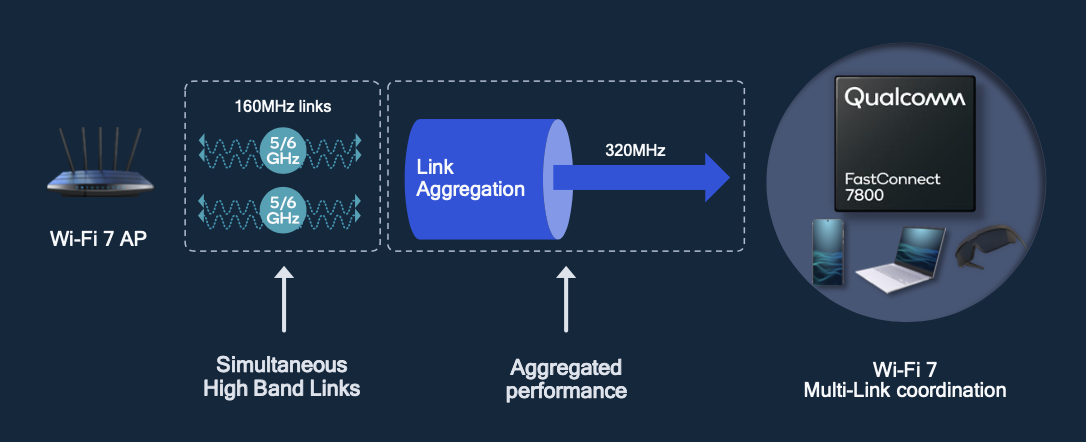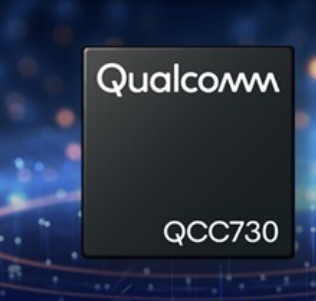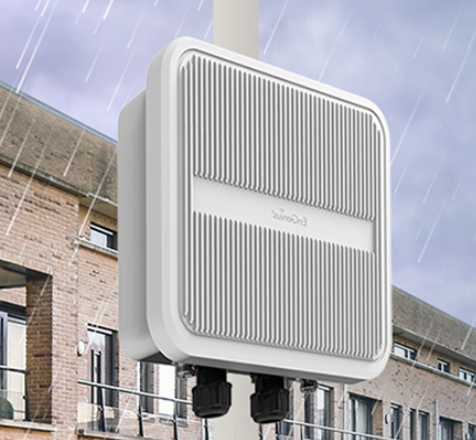 By Claus Hetting, Wi-Fi NOW CEO & Chairman
By Claus Hetting, Wi-Fi NOW CEO & Chairman
Qualcomm released the world’s first commercial Wi-Fi 7 solution today. Qualcomm says the new solution breaks the world speed record for fastest device-end Wi-Fi throughput rate, drives down sustained latency to less than 2 milliseconds, and even includes a few features from beyond the expected first version of the Wi-Fi 7 standard. Altogether a formidable release setting the pace for the next big leap in Wi-Fi connectivity – including connecting the much-anticipated ‘Metaverse’.
Following Qualcomm setting the scene for Wi-Fi 7 just a couple of weeks ago it was pretty much expected that the company would release the world’s first commercially available Wi-Fi 7 solution at Mobile World Congress. And yes, Qualcomm today released the world’s first commercially available Wi-Fi 7 chipset platform for mobile phones and laptops. The new FastConnect 7800 chipset is also the world’s fastest Wi-Fi solution for phones and laptops period – clocking in at a whopping 5.8 Gbps.
The raw specs for the FastConnect 7800 also include a sustained latency of less than 2 milliseconds – half of that of the previous Wi-Fi standard (Wi-Fi 6) – and power consumption is reduced by up to 50%. The new platform is expected to lend itself perfectly to ‘immersive mobile, compute, and XR experiences’ Qualcomm says and yes, the Metaverse immediately springs to mind. Qualcomm says the chipset is sampling now and will be commercially available in the second half of 2022.
Enjoying this story?
Leave your email here and we'll get you all the latest Wi-Fi news.
So how does Qualcomm deliver Wi-Fi specs like this? Well, first of all the new Wi-Fi 7 standard – for which certification is still not ready but remains in the Wi-Fi Alliance’s pipeline of course – operates at 320 MHz channels (either split 160 MHz channels or a single 320 MHz channel) as well as 4K QAM modulation. The two features together deliver the record-breaking 5.8 Gbps raw bitrate. Add to this what Qualcomm calls ‘the signature implementation’ of Wi-Fi 7: High Band Simultaneous (HBS) Multi-Link – also known as multi-link operation (MLO) in the 802.11be standard.
HBS Multi-Link doesn’t change the peak bit rate but instead aggregates two simultaneous 160 MHz channels (four streams) in the 5 GHz and 6 GHz bands. This method contributes to reducing sustained latency to less than 2 mS. This also means that Qualcomm’s new Wi-Fi 7 client-end chip is exactly what super-high performance XR-type applications will need for users to stay within the uninterrupted, lag-free, immersive experience. And perhaps that is really the biggest ‘between the lines’ message from Qualcomm to the markets this week: Yes, we are preparing the world of connectivity for the Metaverse.

The Wi-Fi 7 standard – and the FastConnect 7800 client platform – is really the first Wi-Fi version specifically made for the 6 GHz band, which begs the question: What happens if you’re in a country with no 6 GHz band allocation for Wi-Fi, such as for example China? Not to worry, says Qualcomm. You get nearly the same benefit because you can apply the HBS Multi-Link feature to two channels in the 5 GHz band and get to a total of 240 (160+80) MHz of channel width while preserving much of the latency performance (because of the multi-link functionality). The only difference is that the peak bit rate in the case of aggregating two 5 GHz bands (240 MHz total) drops to 4.3 Gbps, which is however still amazingly fast.
The latency is also driven down by Qualcomm’s 4-stream (2×2+2×2) DBS feature – read more about it here – which on the new platform now extends into the 5 GHz and 6 GHz bands (previously it supported the 2.4 GHz and 5 GHz bands). Qualcomm says the revamped 4-stream DBS feature can also be used for new combined use cases, such as a phone or laptop connecting to both an AP and for example AR glasses at the same time. Altogether a formidable, feature-packed release, which sets an agressive pace for the rest of the Wi-Fi ecosystem to follow.
/Claus.









